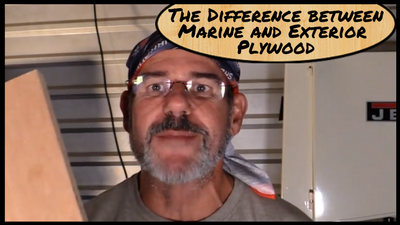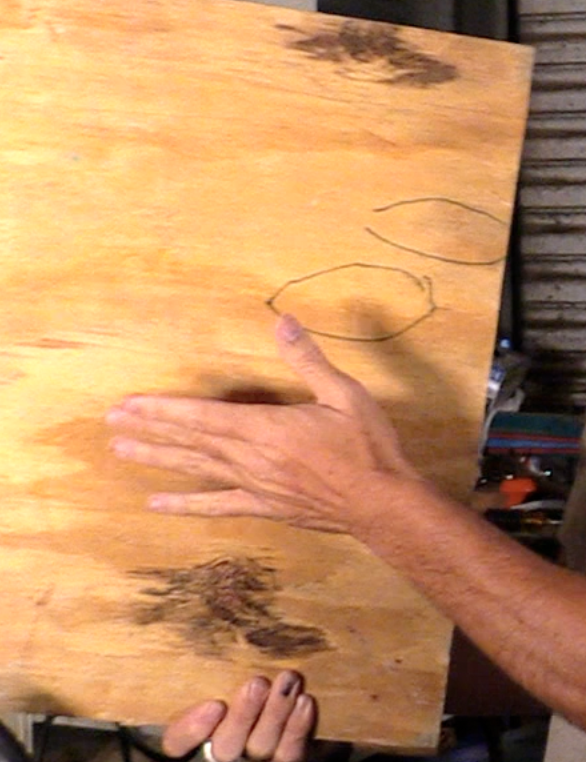With all the work we have been doing on the boat, we have had our chance to do a little research on different materials. I started to inquire about plywood several years. I knew that at some point I would be making more extensive repairs to the boat.
What amazed me is that there were a LOT of different facts touted out there. I expected people to have an opinion on plywood (marine, vs construction grade). What I didn’t expect was that each would cite incorrect facts to support their position. Like most things, you don’t know what you don’t know, but after a while, I picked up on the mismatch based on these discussions.
The interesting thing is that these reasons and ‘facts’ were being shared by people I expected to know. It started casually, asking in boating forums or online. Then I went to inquire at my local home supply store. Then I began to ask at some places that did boat repairs. With all the contradictory answers, I needed to do the research myself. I want to share those results with you, as well as photos to show the difference as well.
There are a lot of different varieties of plywood out there. To make this as simple as possible, this article will focus on two general classes of Plywood that are most common.
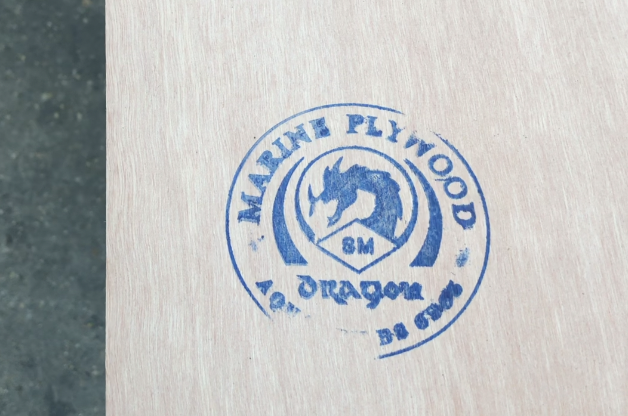 The first is Marine Grade Plywood; the other is Exterior Grade Plywood. Exterior grade plywood is also known as construction grade plywood in many stores. The exterior is what you will typically find at your local big box lumber/hardware store. By and large, this is what Home Depot, Lowes, 84 Lumber, etc. will carry. There may be some exceptions to this rule, but this is a fair generalization. For this comparison, we will be looking at 3/4 inch thick plywood in both grades to ensure there is a reasonable and close comparison.
The first is Marine Grade Plywood; the other is Exterior Grade Plywood. Exterior grade plywood is also known as construction grade plywood in many stores. The exterior is what you will typically find at your local big box lumber/hardware store. By and large, this is what Home Depot, Lowes, 84 Lumber, etc. will carry. There may be some exceptions to this rule, but this is a fair generalization. For this comparison, we will be looking at 3/4 inch thick plywood in both grades to ensure there is a reasonable and close comparison.
There are five primary differences between the two types that we will cover in this article. These include the layers, glue, wood, quality, and cost.
Let’s have a quick refresher on what plywood is. Plywood layers (plies) of wood glued together with the grain in opposite directions. The alternating grain direction makes the wood stronger and more stable in all directions. If all the grain went the same way, it would be prone to breaking with the grain. The wood gets cut from a tree trunk with a lathe in sheets that are then glued together.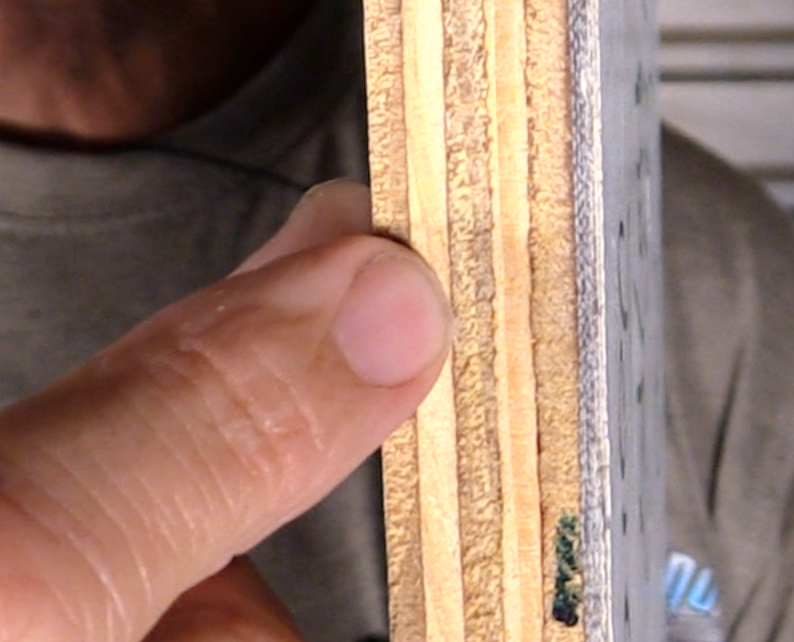
Layers
The first primary difference between Marine and Exterior are the number of plies that are in a sheet of plywood. Exterior grade in 3/4″ thickness will have five layers or plies of material. In this close-up image, you can see and count the number of layers. The piece of wood in the photo is a small piece of the roof of our boat we cut out. You will notice that on one side there is a “white” layer, that is a layer of fiberglass that was skinned over the top of it. You can clearly see five layers.
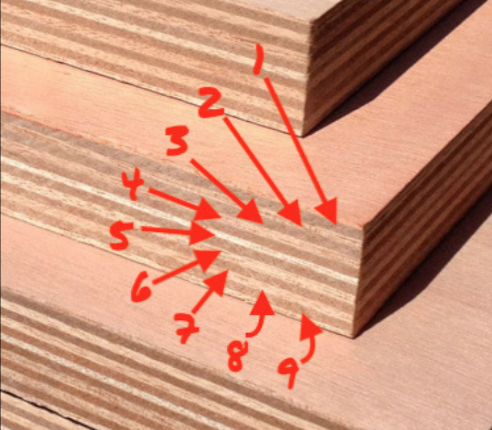 Marine grade plywood in the same thickness has between 9 and 11 layers of wood. In the photo of the marine grade plywood, you can see the numbers and arrows pointing to each.
Marine grade plywood in the same thickness has between 9 and 11 layers of wood. In the photo of the marine grade plywood, you can see the numbers and arrows pointing to each.
The astute may notice a thin layer not counted on both the top and bottom. This is often a veneer layer to provide a specific species of wood. This is especially useful when the material is going to be visible or exposed. This may be something like cabinetry or a bulkhead in the boat interior.
If you look closely at these two images, you can see the difference in the number of layers alone. You may notice other differences as well that are not obvious, but visible none the less.
Glue
Both Exterior and Marine Grade plywood use an exterior glue. In this area, they are very similar, and there is not a primary difference, making one better than the other. Be cautious. However, there are some types of plywood that do not use an “exterior” glue and is more sensitive. Interior or general glue doesn’t last as long when exposed to moisture and temperature changes which is why Exterior Glue is needed. Marine and Exterior wood use an ‘Exterior and Boil-Proof’ glue. This glue resists the growth of fungus as well as protection from moisture and temperature changes.
Wood
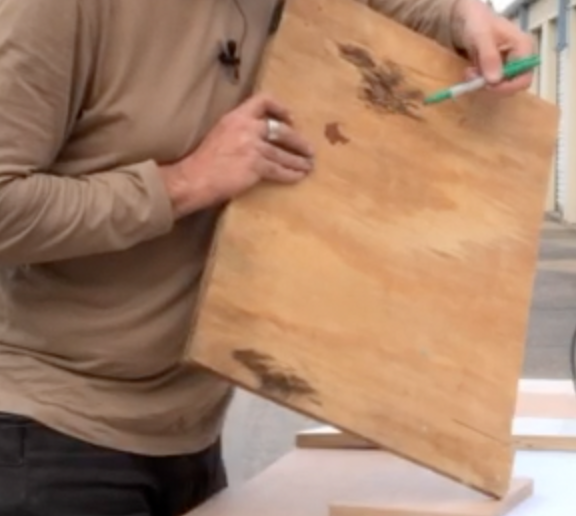 The other thing you may have noticed when looking at the photos above is that the Marine Grade plywood looks better. It is hard to pinpoint why when you first look at it, but there are two things that lead to this noticeable difference. One of those is the type of wood used. Construction grade plywood is often not seen by most people. It is commonly used to build things that get covered. Think of a home that gets siding or bricks applied outside of it. It may be a dog house or backyard project that will be covered in siding or paint. Because of this, the wood material used doesn’t have to withstand the ‘hits’ that marine grade plywood may have to.
The other thing you may have noticed when looking at the photos above is that the Marine Grade plywood looks better. It is hard to pinpoint why when you first look at it, but there are two things that lead to this noticeable difference. One of those is the type of wood used. Construction grade plywood is often not seen by most people. It is commonly used to build things that get covered. Think of a home that gets siding or bricks applied outside of it. It may be a dog house or backyard project that will be covered in siding or paint. Because of this, the wood material used doesn’t have to withstand the ‘hits’ that marine grade plywood may have to.
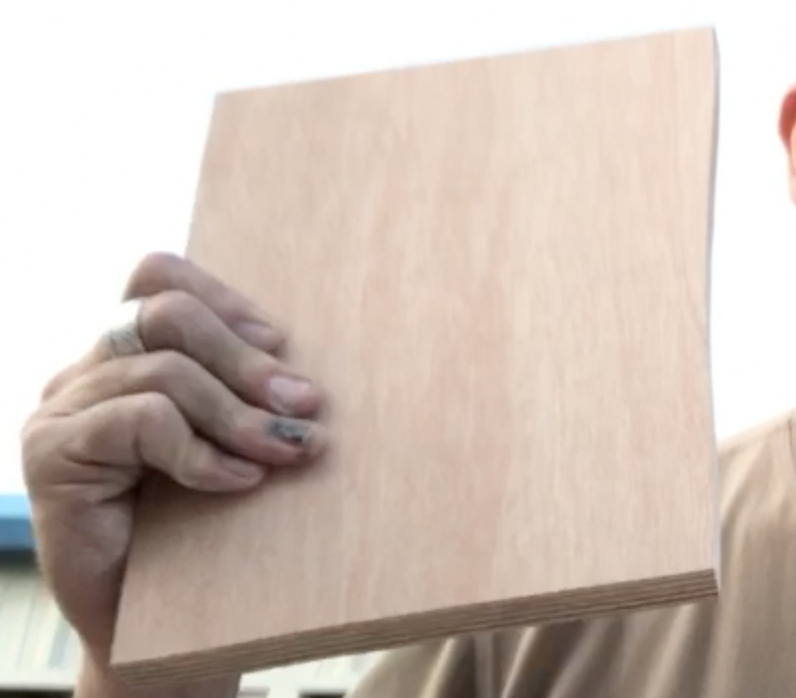
Exterior grade plywood is often made from Pine or Fir in most cases due to the cost of the wood. These tend to be softwoods. If you are not sure if wood is soft or hard, use your fingernail and press against the grains and scratch with it. If your fingernail makes a dent in the grains, it is usually a softer wood. You will notice with hardwood; this won’t happen.
Marine Grade plywood is typically made from varieties of wood in the hardwood family. There are a host of different ones that can be used, but the most common are Mahogany, Maple, Ash, etc.
Quality
The other primary difference between the woods is the quality of the wood. There is two significant difference. One you can see quickly, the other is not visible in most cases. Exterior grade plywood can have what is referred to as “checks” or “voids” in the material. These voids happen during the process. If you consider the way a sheet of plywood comes off of a rotating tree trunk, you can understand how voids happen. If a tree has a knot in it, when that “turns” off the log, the round knot often becomes an oval hard spot. We have all seen a knothole in a board; this happens even easier when the layers are skinny. As these ‘knots’ fall out of the layers and they are glued together, there can be a small void in one layer. In the first photo of this section, you can see the green drawn oval shapes on the wood. This is the shape a knot tends to take when it is peeled or shaved off the tree trunk.
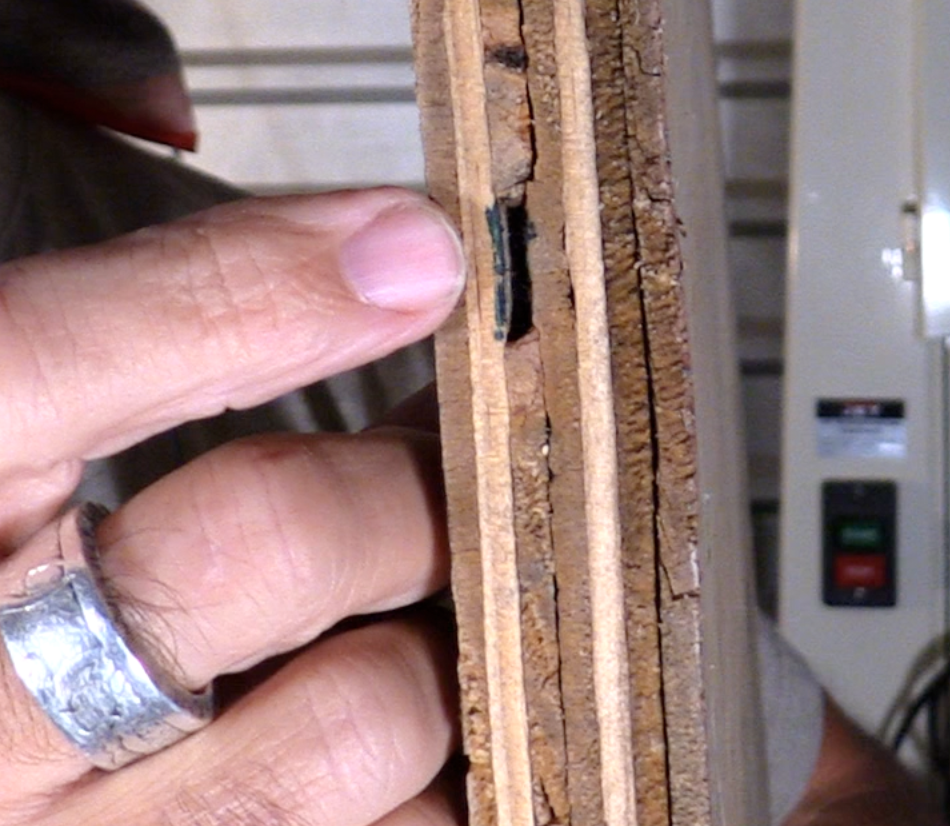
If you cut the wood in one of these areas, you can see the void in the layers. In the second photo of the cross-section of the wood, you can see a small void. This is because there was a cut made across the edge of one of these oval-shaped knot holes in one of the layers. These can be small like in this picture or depending on the direction of the cut, I have seen them as large as 4 inches long.
The other quality factor is the “facing” of the wood itself. Plywood receives a grade for its face. You may see plywood referred to as C/D plywood. This means one side of a grade of C and the other is D. This is common in exterior grade plywood. If you rub your hand on it, you will notice it is rough. Based on the application that makes sense, it will likely be covered with something as we stated above. Marine grade plywood is often A/A or A/B. This grade means that the veneers (outer layers) are free from defects. Grade B can have minor defects or repairs (glued in knots for example). The species of wood usually dictates the look and level of defects.
Cost
The last factor is cost. While prices are subject to change, the cost comparison remains pretty consistent even when prices go up or down. For a sheet of 3/4″ exterior grade plywood at a home supply store, you will expect to pay about $40. For that same thickness of Marine grade plywood, you should expect to pay about $160. At the time of this writing, these are the costs that I bought each for. However, it is safe to assume that you will pay about four times more for Marine grade.
So the question you may ask yourself is which should I use. It all depends on your application. That said, for work on my boat, I choose Marine grade every time. The cost difference, while significant, at a 4x factor, is not enough to have me go to the exterior. In the grand scheme of things, the money I spend on marine grade plywood is still a tiny fraction of the cost of my boat. Because of that, I would hate to use a substandard product for the application to save half of 1 % of the boat value.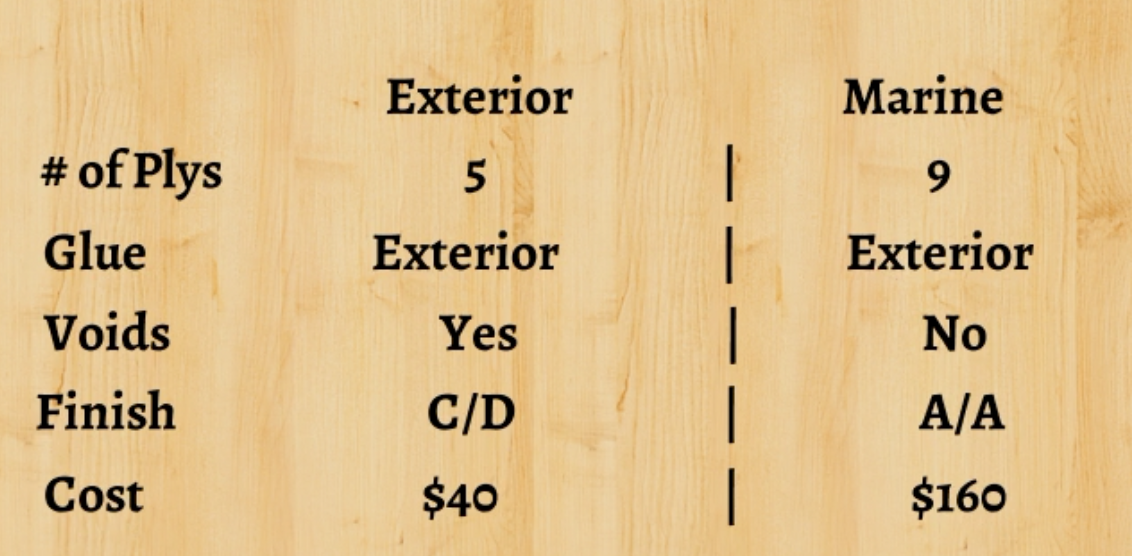
See our video here on this topic with all the details !!!
[embedyt] https://www.youtube.com/watch?v=ICD-WHePK_I[/embedyt]
